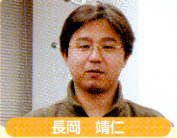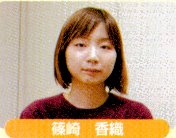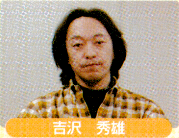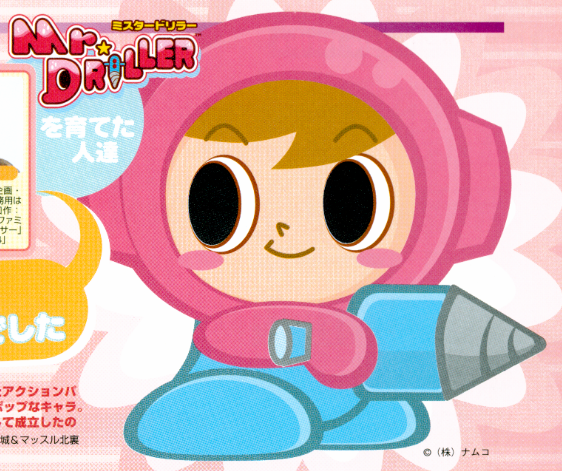Published in Arcadia Vol. 3 (April 30, 2000). Roundtable discussion of the Namco action-puzzle game Mr. Driller, which had recently released in arcades and was soon to release on home systems.
In this shut-off era, the puzzle action game Mr. Driller bursts onto the scene. With a sublime combination of retro gameplay and pop-art characters, how did this game come to be?
Participants

Yasuhito Nagaoka
Member of the Namco CS development group. In charge of planning and game design. This is his first arcade release. Previous works include Famista ’94, Super Family Gerende, Rage Racer, and R4: Ridge Racer Type 4.

Tomohiro Kaneko
Member of the Namco CS development group. In charge of programming. Previous works include Wagyan Paradise, Prime Goal EX, and Libero Grande.

Kaori Shinozaki
Member of the Namco CS management studio. In charge of character design. This was her first work as character designer. Previous works include Klonoa: Door to Phantomile (backgrounds), and Libero Grande (studio design).

Go Shiina
Member of the Namco CS development group. In charge of sound. Previous works include Hammer Champ, World Stadium ’98, Miracle Bingo Show (medal game), Ace Combat 3, and Quick & Crash.

Hideo Yoshizawa
Section manager of the Namco CS development group. In charge of production. Previous works include Yu Yu Hakusho (Visual Battle), Wagyan Paradise, Klonoa: Door to Phantomile, R4: Ridge Racer Type 4, and Ace Combat 3.

Masuya Oishi
Assistant head of the Namco VS development group. In charge of production. Previous works include Shadow Land, Ordyne, Soul Edge, Soul Calibur, and Libero Grande.

Hiroshi Goshowaki
In charge of publicity for Namco VS development group. Has worked on many games, from Assault to Tekken Tag Tournament.
A crack in the era
– Arcades have recently been in gradual decline, with the music game boom coming to a stop, and fighting games no longer pulling in the income that they used to. And then comes a breath of fresh air in the form of the part new, part nostalgic smash hit Mr. Driller. How did the plan for this game come about?
Nagaoka: The first proposal came around July 1996, when we had just finished Rage Racer and were considering what to do next. The first version from around that time had a different chaining system, with hexagonal blocks that would slide down diagonally. We had some programmers work on it in secret for three or four days, and it was more-or-less working, but the chains ended up being hard to identify, so it wasn’t really great as a game.
It wasn’t until about two and a half years later, around when R4 was done, that we wanted to work on it again. This time, we used square blocks, and it ended up seeming much more promising. From there, the project was handed over to Yoshizawa-san.
Yoshizawa: My first impression of the game was “isn’t this just your run-of-the-mill falling block puzzle?”. But once I got a playable version and actually tried it, I was totally absorbed by it and played for an hour straight. If I had to describe it, it was the same feeling I had when I first played Tetris1 or Torneko2. I knew we were onto something good, but I thought that before bringing it to home consoles, we could make it a big hit in arcades. So, I brought it to Mr. Oishi, and gradually more and more surrounding people got roped into it. (laughs)
1 A puzzle game made in the former Soviet Union that debuted in Japan from Sega in 1988. The originator of falling-block puzzle games.
2 One of Super Famicom’s masterpiece RPGs, made by Chunsoft. Has many puzzle elements. {First entry of Mystery Dungeon series}
Oishi: At first, we just left the game on in the media space, and people in the VS Development Division kept getting hooked on it (laughs). People were like “this is great, let’s go do a location test3” even though it was a version of the game with only three days’ development (laughs). So from there we did some brainstorming, and tried to figure out what we needed to add to make it a game worth spending 100 yen on.
3 Bringing an in-development game to a game center to see how it performs, and to get feedback for further development.
– Around when would this be?
Nagaoka: We finished R4 in January 1999, and we started on Mr. Driller in February… I think the location test was around June.
– That seems fast.
Yoshizawa: When we were deciding whether or not to bring it to market, the managing director happened to pass by and got addicted to the game, and from there word got up all the way to the company president, and then it became a rumor within the company that the president had taken a liking to the game, and that kind of talk kept going (laughs).
Home and arcade trial and error
– How did you decide what systems and components would be included in the game?
Oishi: We tried many different things out, when it comes to power-ups and items. The core gameplay is simple, so we had to consider whether there was a need for that added complexity.
Nagaoka: The change to the lives system you see in the current game happened a week before the location test. Before that we tried some other ideas, like barriers you would get from items.
– What was the response like at the location test?
Yoshizawa: Even beyond income, the response blew past our expectations. There were constantly people feeding credits into the machines, and on the 9th credit of the 2nd day, someone managed to clear 500 meters (laughs).
Yoshizawa: Everyone was really dumping coins in there. We realized we made a game with great replay value. And the number of people we were attracting hadn’t dropped the whole time. Once the location test was over, we went for yakitori to celebrate (laughs).
Nagaoka: At the time of the location test, the game didn’t have a play demo.
Oishi: There was talk of how we needed to have a play demo, and so we quickly put one together and added it around the third day of location testing. It was to teach people how to play the game, as well as to attract peoples’ attention to the game with a showy demo.
Nagaoka: We come from the home game division, where it’s okay for us to wait until the end to add a demo. We hadn’t included the demo at first, so people didn’t know how to play the game. So once we added the demo, we got more eyes on the game.
Oishi: We had Kaneko, who had experience with arcade games through Libero Grande, join us, so we felt better about that part of things.
– How much of the game ended up changing after the location test?
Nagaoka: We added the Undergrounders, as well as advice for beginners on the results screen. For high level players, pretty much just adding the ability to earn the title of “Mr. Driller” (clear without dying or with over 600,000 points).
– How is the block structure determined for every level?
Kaneko: The block rotation was determined in the early stages of development by programmer Matsumoto-san. Though he’s in America right now.
Nagaoka: We’re advocating Japanese-American joint development (laughs).
– And, what about the mechanic of X blocks depleting air?
Nagaoka: At first you couldn’t dig through them at all, creating “checkmate” situations. And when we realized “hey, that’s not good” and tried to think of a penalty we could use instead, air depletion was the best option.
– Why do air capsules increase your air by 22 percent?
Kaneko: If it was exactly 20 percent, breaking an X block and getting an air capsule wouldn’t have a net zero effect. Because your air is dropping in the time it takes to get the capsule. So to make it more accurate, it increases it by 23 percent.
– That’s some very well thought out game configuration.
Nagaoka: The gameplay itself was pretty much finished right from the beginning, so from then on we concentrated on fine-tuning.
Oishi: Mr. Driller perfectly balances the “Holy Trinity” of character movement, fall speed, and random block generation. It’s a triumph of game balance.
– What did the arrangement of blocks for every level end up being like?
Kaneko: For each level, the colors that are used, the ratio of X blocks, and both the arrangement and number of air capsules surrounded by X blocks are preset, and the rest is random. The randomly placed X blocks ended up going on every other line.
Nagaoka: At first there were a lot of places to get stuck. The X blocks ended up forming lattice patterns. It ended up feeling blocked up, so doing it every other line made it much less cramped. We also toiled over stage variety. Various changes for each stage were essential. The two-color stages ended up happening by chance. We tried it out figuring it wouldn’t really make for particularly good gameplay, but it was fun in its own way. It felt like surfing.
Kaneko: We also decreased the number of X blocks in the two-color stages. There’s also some difference in the difficulty of three-color and four-color stages.
– How did the double air collecting mechanic come about?
Kaneko: Well, that’s obviously a bug (laughs). If you break the 100 meter block in the moment when your character and the air capsule are aligned, the air indicator is still there and it respawns. Every 100 meters the air capsules are restored, so in the program, the traces of it are still there.
Kaneko: We thought we were safe from having the score counter max out, but we did the calculations, and if you do the doubling glitch 5 times, and quickly make it through the game, it does end up maxing out. Well, that ended up becoming well-documented in magazines, so we left it in the console versions on-purpose. Though to show that we could fix it, we removed it from the console-exclusive Time Attack mode (laughs).

The birth of the character “Susumu Hori”
– When it comes to a game about digging, you can’t help but think of that other one…
Nagaoka: At first, the character in this game was Dig Dug4. The name was also “Dig Dug Attack” (laughs).
4 A masterpiece action game released by Namco in 1982. A game where you burrow through the earth and defeat underground monsters.
Yoshizawa: There was a strong opinion within the company that we should make it “Dig Dug 3″… it was probably more of a jab. So after that, we made it a game where a handsome youth dug through the earth with a laser (laughs).
Oishi: We ended up having disputes over whether it should be a drill or a laser (laughs).
Shinozaki: Of course, people at Namco have a lot of love for Dig Dug, so at first we tried to design it so it would reflect the fundamental components of Dig Dug. But it ended up not quite being right, and wasn’t intuitive. So, it became a chance to create something original.
Yoshizawa: We couldn’t just have your generic cute character either. We wanted a character that you could wear a T-shirt of and not be embarrassed. So that one day, you could look at the game, see Susumu-kun’s face proudly displayed on the title screen, and have it leave a huge impact. We had all-hands discussions about what would be good, or what direction we would go in, until we reached a decision.
Shinozaki: Yoshizawa-san had some pretty strong opinions too (laughs).
Nagaoka: Because we have a pretty cute, pop-style character, we’ve lately had a lot of women playing the game, even with the hardcore gameplay.
– First seeing the character, it was a very pop-y, vector art look (laughs). Shinozaki-san, did you draw inspiration from any favorite artists in particular?
Shinozaki: For Mr. Driller, it had to be Rodney5. Other than that, Junko Mizuno-san6 and Michael Economy7 were influences.
5 Rodney Greenblat. Best known in Japan for his wok on the games PaRappa the Rapper and Um Jammer Lammy.
6 Manga artist and illustrator born in 1973. A pop artist, but lively characters are her signature.
7 A New York illustrator who also has manga influence from experience living in Japan.
– I see that the rough drafts include the pretty boy version.
Shinozaki: I do like pretty boys too (laughs).
– By the way, how did you decide on the name “Susumu Hori”?
Shinozaki: We had a lot of name candidates. One of the ideas that came up when we were deciding on the game title was “Susumu Hori no Daibouken (Susumu Hori’s Great Adventure)”, but that was so, so cliche, so it was rejected (laughs).
Nagaoka: We took a staff survey. Some of the ideas were “Shou Horima”, “Holy McLean”, “Tony Kirk Hornovsky”, “Rankai Hou”, “Holina Harley”, as well as…
– I think that’s enough, thank you very much (laughs).
Nagaoka: … So, in the end we were like “well, ‘Susumu-kun’ is good”.
Shinozaki: By the way, the person you see piloting the helicopter in the ending is named “Taiyo Hori”, Susumu-kun’s younger brother. He’s on apprenticeship.
Shiina: Even though “Sojuro Heli” would’ve been a better name.
Yoshizawa: “Susumu-kun” is also kinda overdone, but his name ended up making it onto sales fliers, so we had no choice but to accept it.
– By the way, what about the mystery of Susumu-kun’s net income?
Shinozaki: His base pay is 190,000 yen {approx $1.9k}.
Shiina: Isn’t that a little low?
Shinozaki: Because he gets hazard pay.
Yoshizawa: Who even pays him?
Nagaoka: The World Driller Association. They usually work on construction sites, but at times like these, they’re dispatched.
Yoshizawa: If we say too much, we’ll be kicking ourselves later. People will say “this contradicts the established lore!” (laughs).
Nagaoka: By the way, Susumu-kun’s height is different between the Japanese and overseas versions.
– Huh, why’s that?
Nagaoka: In Japan, the blocks are 1 meter by 1 meter, so Susumu-kum is 99.8 centimeters tall. But overseas, the blocks are 5 feet by 5 feet, so Susumu is just under 150 centimeters tall.
– Some of the blocks in-game look like food, but what do they taste like?
Shinozaki: Please see this table.
| Blue | Mousse with sauce |
| Red | Blueberry |
| Yellow | Strawberry |
| Green | Lemon |
| X blocks | Chocolate |
| Blocks with holes on two-color stages | Cheese |
| Yellow hole blocks | Lemon Cheese |
| Green hole blocks | Melon Cheese |
| Bubbly blocks | Candy Drops |
| Spiral blocks | Whipped Cream |
| Cake Blocks | Sponge Cake Topped with Fresh Cream |
– Can Susumu-kun eat them?
Shinozaki: He cannot.
Nagaoka: If people could eat them, I think world hunger would be solved (laughs).
About the sound
– In an arcade where you need to stand out from surrounding sound, what concerns did you have in approaching the game’s sound?
Shiina: For sound effects, it’s easy to create sounds for something like a missile’s explosion. But in Driller’s case, it has a liquidy… a sound like water bursting, which couldn’t be heard at all at the location test.
Nagaoka: The sound it makes when you dig was the result of a lot of trial and error.
Shiina: By the way, the sound of chaining ended up sounding like a wet fart, so changing it became a critical effort (laughs). So, the digging sound doesn’t just repeat, we made additional sounds as well.
– What about the music?
Shiina: It was not received well (laughs).
Nagaoka: I did think “does this really fit the game?” the first time I heard it (laughs).
Yoshizawa: I think it fits quite well when you’re in-game. It has this subtle feeling of discomfort, but in a good way that gets you more sucked into the game. On the other hand, maybe I should give less effusive praise…
Shiina: I’m being sweet-talked (laughs).
– Was there anything particularly difficult you dealt with writing the songs?
Shiina: Storage capacity!
Oishi: Of course, for this kind of game, we want to use an inexpensive board so arcades will buy it. So, Shiina-kun and Shinozaki-san kept compressing their data for us. Putting together a ROM is an art in and of itself.
Shiina: I used particular sound sources this time. Sound synthesis comes in varieties like FM, PCM, and VL, and they all have different characteristics. PCM is best for sampling, FM makes sounds with sine wave forms. On the other hand, in VL synthesis, you make fake instruments, and it will generate simulated sounds. This time, I thought it would generally be good to use FM synthesis, but I ended up making some with VL and adding some PCM. It became quite a process (laughs), but I learned a lot.

Susumu-kun from here on out
– What future developments are in store for Mr. Driller?
Yoshizawa: Right now, I want to get the PlayStation version out by summer.
Nagaoka: The Time Attack Mode in the console version is intense. It’s a battle that comes down to fractions of seconds.
– Are there any other new modes?
Nagaoka: There’s a Survival Mode, where you only have one life to get as far as you can. The current staff record is 4,000 meters.
– What about a sequel?
Yoshizawa: We’re doing some forward-facing investigation right now. We’ve received a lot of mail through the Driller page on the Namco “Wonder Page” homepage, and while we can’t respond to them, we’re reading them all. If you have any hopes or ideas for a “2”, we’re ready to hear from you.
Goshowaki: Interviews are constantly being released on the “Game Japan”8 homepage too, so please look forward to that. There’s also a Shinozaki-made “Susumu-kun banner”. We should have a forum ready soon, too.
– So, any aspirations, or final words for fans?
Yoshizawa: First off, I hope you all buy the home version. Selling a million copies is always the dream, but this time, I wonder if maybe we can do it. In any case, I’d like to have as many people as possible try it out, and have it become something of a grass-roots movement.
Nagaoka: A million copies… that sure would be nice. Maybe I could retire if that happens (laughs). There was a good response at the location test, and I think that if it grows in the home console market, new developments are possible, so please check it out. Also, as a planner, I want to make something that surpasses Mr. Driller.
Shiina: It’d be good if we could quickly have the Driller series move forward, but I want to aim for a nicely-developed series as well. I’d love to see more great digging like we saw from Kamakura-san and others at the Mr. Driller tournament. In my lifetime, I want to hold “Mr. Driller in Nippon Budokan” (Yokohama Arena would also be acceptable).
Shinozaki: For me, I’d like to develop Susumu-kun even more. Make T-shirts9 and stuff. I want him to be a character that even girls who don’t typically play games would know.
9 Namco development staff are known to make their own staff T-shirts. It’s like a uniform for each team.
Kaneko: I had a few fears leading up to release, but after we launched, those concerns were swept away. I think this is a game that defies expectations, in a good way. From here on, I want to keep defying expectations.
All: So cool…
Shiina: He wrapped it all up so nicely! He’s the worst… (laughs)
Oishi: Even if it looks low-tech in screenshots, it’s making use of high-tech. From here on, for the sake of revitalizing arcades, I want to keep making exciting experiences.
Goshowaki: Media is diversifying nowadays, but grass-roots movements are still a fundamental part of arcade games. Of course, building excitement among your average player is a key part of making a hit. I think that on the Namco-side of things, we’re also working on something to fuel that movement.
– Thank you all for taking time out of your busy schedules to talk.

